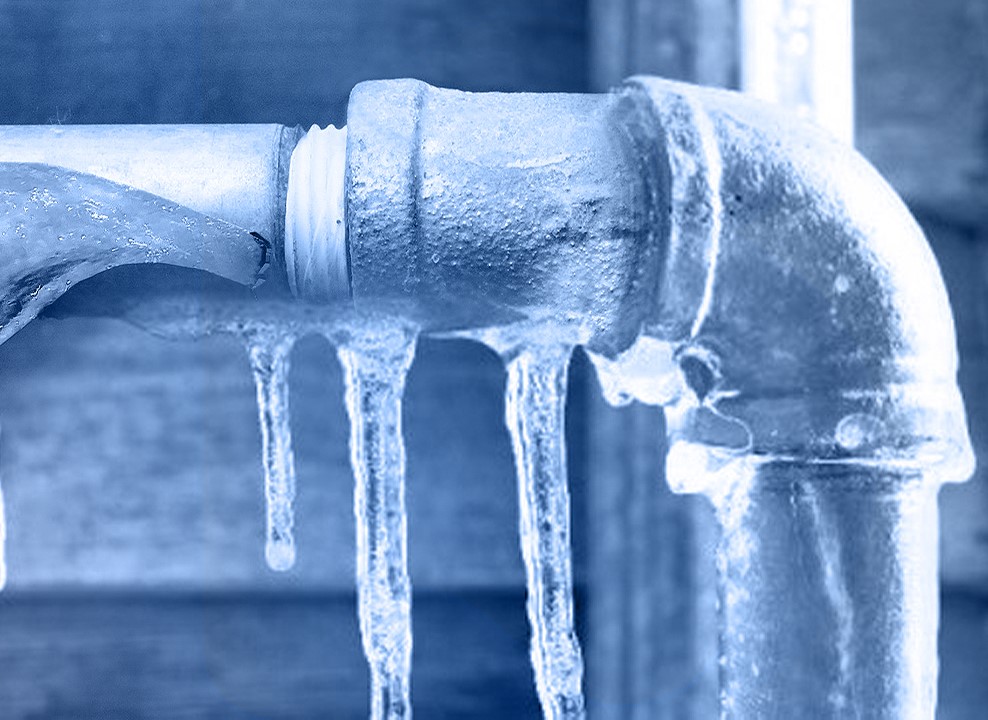Preventing Frozen Plumbing: Best Tips for Winter
Preventing Frozen Plumbing: Best Tips for Winter
Blog Article
Each person may have their personal beliefs on the subject of How to Prevent Your Pipes From Freezing.

Winter can damage your pipes, especially by freezing pipes. Here's just how to avoid it from occurring and what to do if it does.
Introduction
As temperature levels drop, the danger of icy pipelines boosts, potentially resulting in expensive repairs and water damages. Recognizing exactly how to prevent frozen pipelines is critical for homeowners in chilly environments.
Avoidance Tips
Insulating at risk pipelines
Wrap pipes in insulation sleeves or utilize warmth tape to protect them from freezing temperatures. Concentrate on pipelines in unheated or external areas of the home.
Heating strategies
Maintain indoor areas properly heated, especially locations with plumbing. Open up cupboard doors to allow cozy air to flow around pipelines under sinks.
How to recognize icy pipelines
Try to find reduced water circulation from faucets, unusual odors or noises from pipelines, and visible frost on subjected pipelines.
Long-Term Solutions
Structural changes
Take into consideration rerouting pipes away from outside wall surfaces or unheated locations. Add additional insulation to attic rooms, cellars, and crawl spaces.
Updating insulation
Invest in premium insulation for pipelines, attics, and walls. Appropriate insulation assists preserve constant temperatures and lowers the risk of frozen pipes.
Shielding Outside Pipes
Garden tubes and outdoor faucets
Disconnect and drain pipes garden hose pipes before wintertime. Install frost-proof spigots or cover outside taps with shielded caps.
Comprehending Icy Pipes
What creates pipes to freeze?
Pipelines ice up when exposed to temperature levels below 32 ° F (0 ° C) for prolonged durations. As water inside the pipes freezes, it broadens, taxing the pipeline wall surfaces and potentially causing them to rupture.
Risks and damages
Icy pipelines can bring about supply of water interruptions, property damage, and expensive repair work. Burst pipes can flooding homes and trigger substantial architectural damage.
Signs of Frozen Pipes
Recognizing icy pipes early can prevent them from bursting.
What to Do If Your Pipelines Freeze
Immediate actions to take
If you suspect icy pipes, keep taps open to soothe pressure as the ice thaws. Utilize a hairdryer or towels taken in hot water to thaw pipelines slowly.
Verdict
Avoiding icy pipes needs aggressive steps and fast reactions. By recognizing the reasons, signs, and preventive measures, home owners can protect their plumbing throughout winter.
5 Ways to Prevent Frozen Pipes
Drain Outdoor Faucets and Disconnect Hoses
First, close the shut-off valve that controls the flow of water in the pipe to your outdoor faucet. Then, head outside to disconnect and drain your hose and open the outdoor faucet to allow the water to completely drain out of the line. Turn off the faucet when done. Finally, head back to the shut-off valve and drain the remaining water inside the pipe into a bucket or container. Additionally, if you have a home irrigation system, you should consider hiring an expert to clear the system of water each year.
Insulate Pipes
One of the best and most cost-effective methods for preventing frozen water pipes is to wrap your pipes with insulation. This is especially important for areas in your home that aren’t exposed to heat, such as an attic. We suggest using foam sleeves, which can typically be found at your local hardware store.
Keep Heat Running at 65
Your pipes are located inside your walls, and the temperature there is much colder than the rest of the house. To prevent your pipes from freezing, The Insurance Information Institute suggests that you keep your home heated to at least 65 degrees, even when traveling. You may want to invest in smart devices that can keep an eye on the temperature in your home while you’re away.
Leave Water Dripping
Moving water — even a small trickle — can prevent ice from forming inside your pipes. When freezing temps are imminent, start a drip of water from all faucets that serve exposed pipes. Leaving a few faucets running will also help relieve pressure inside the pipes and help prevent a rupture if the water inside freezes.
Open Cupboard Doors
Warm your kitchen and bathroom pipes by opening cupboards and vanities. You should also leave your interior doors ajar to help warm air circulate evenly throughout your home.

Do you appreciate reading up on Helpful Tips to Prevent Frozen Pipes this Winter? Create feedback directly below. We would be pleased to see your thinking about this posting. We hope that you come back again in the future. Remember to take the opportunity to promote this blog post if you appreciated it. I am grateful for your time. Come back soon.
More Details Report this page